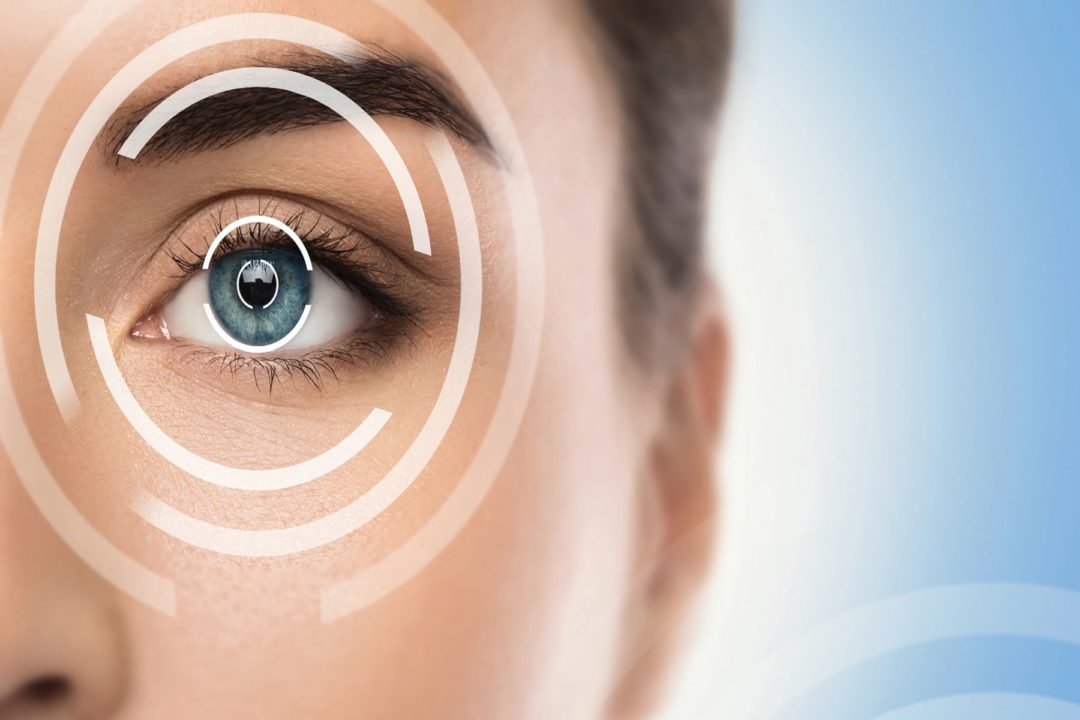As consumers surf their phones for the latest health information, awareness of the effects of prolonged screen time is increasing, according to Reportlinker, which projects that the global eye health supplements market will grow at a CAGR of 5.5% from 2020 to 2027, reaching $2.4 billion by the end of the forecast period (2).
Also projecting growth, a report by Grand View Research points to growing exposure to blue light, a rising elderly population, and increasing prevalence of vision disorders such as macular degeneration, refractive errors, cataracts, inflammation, diabetic retinopathy, corneal opacity, trachoma, and dry eye syndrome. Also driving market growth: lifestyle changes leading to less time spent outdoors and poor nutritional habits and dropping food quality (3).
Taking a closer look at blue light, Cynthia Rousselot, Director of Technical and Regulatory Affairs at IADSA, reported earlier this year: “Exposure to blue light has increased for people of all ages, which means eye health is no longer a priority only for the elderly” (4).
In May, IADSA announced a new resource,The Dark Side of Blue Light,which explains that a daily intake of 10mg lutein and 2mg zeaxanthin can help to maintain macular health. These nutrients can be found in foods like broccoli, spinach, kale, citrus fruits, avocados, and eggs—but these foods would have to be consumed in massive quantities daily to get a scientifically meaningful amount of lutein and zeaxanthin.
Enter dietary supplements. The IADSA resource was developed in association with the Council for Responsible Nutrition (CRN). Steve Mister, CRN President and CEO, said, “Smart phones, computers and energy efficient LED lighting have enriched our lives and delivered many benefits to society. The flipside is a detrimental impact on eye health. With studies showing that 10mg lutein and 2mg zeaxanthin can help to maintain eye health, including these antioxidants in the diet is a sensible step to take.”
It’s not just about eyes, either. According to Lankford, “The constant and unrelenting exposure has an effect, not only on our eyes but can have numerous other consequences such as disrupted sleep, headaches and so on. A recent study has shown that supplementation with macular carotenoids improved sleep quality and improved vision. The benefits include improved contrast sensitivity, decreased glare and improved photo-stress recovery. Subjects had fewer headaches, with less eyestrain and eye fatigue.”
Marc Grossman, OD, LAc., andMichael Edson, LAc., Co-founders of NaturalEyeCare, report, add improved brain function to the list. “The protective benefits of lutein and zeaxanthin appear to be related to their special structure. Like all xanthophylls, lutein and zeaxanthin can immerse themselves into the membranes of fatty brain cells. They cross between the interior and exterior environments. Therefore, the cell structure is stabilized and protected from oxidative damage. Xanthophylls appear to concentrate automatically in brain regions most susceptible to oxidative damage” (5).
Another gem for eyes: astaxanthin. “Researchers also have found that astaxanthin is useful in reducing fatigue, sore dry eyes, blurry vision, and recovery from intense visual stimulation, such as a TV or computer screen,” Drs. Grossman and Edson share (6).
Also recognized for its eye-health benefits: “The anthocyanosides in bilberries may help protect the retina, and for that reason bilberry has been suggested as a treatment for retinal damage (retinopathy)," Andrew Weil, M.D., shares on drweil.com (7). He noted that bilberry may also protect against macular degeneration, glaucoma, and cataracts, though research is needed. His take: “I recommend bilberry extract for treating eyestrain. The effects are most noticeable in the first four hours after taking a 25 to 50 mg dose of the extract, but they wear off within 24 hours.”
Omega 3 fatty acids play a role here as well. “DHA and EPA, 2 different types of Omega-3 fatty acids, have been shown to improve retinal function and visual development," report the experts at VisionMD.co. “Omega-3 supplements can also ease dry eye symptoms. A randomized controlled study found that people who consumed Omega-3 supplements experienced improved tear quality, which resulted in reduced tear evaporation and increased eye comfort” (8).
In combination, AREDS/AREDS2 research points to formulation with omega-3 fatty acids as well as vitamins C and E, beta-carotene, zinc, lutein, and zeaxanthin (9). "A compilation study from Tufts University, University of Wisconsin, and the EMMES Corporation researched the effects of taking the AREDS supplement plus omega-3 and reducing dGI (dietary glycemic index) on AMD (age-related macular degeneration)," Drs. Grossman and Edson report on their blog. “Looking at the risk of advanced AMD [age-related macular degeneration], the study found that the AREDS supplement plus higher intakes of omega-3 (DHA and EPA), and reducing dietary glycemic index (dGI) helped reduce progression of the disease.”
That’s not all, of course. Experts also point to vitamin D, ginkgo biloba, Coenzyme Q10 and more as being beneficial for eye health, especially for those with macular degeneration. Read Dr. Grossman’s report in, “An Integrative Medical Approach to Macular Degeneration,” in the Townsend Letter for an excellent overview (10).WF
References
- Steve Lankford, “Carotenoids for Macular Health and Blue Light Protection (Podcast),” WholeFoods Magazine. Posted 10/30/2018. Accessed 11/1/2020. https://wholefoodsmagazine.com/multimedia/carotenoids-for-macular-health-and-blue-light-protection-podcast/
- Report Linker, “Eye Health Supplements Market Forecast to 2027 - COVID-19 Impact and Global Analysis by Ingredient Type, Indication, Form, and Geography,” ReportLinker.com. Posted 08/2020. Accessed 11/1/2020. https://www.prnewswire.com/news-releases/eye-health-supplements-market-forecast-to-2027---covid-19-impact-and-global-analysis-by-ingredient-type-indication-form-and-geography-301130963.html
- Grand View Research, “Global Eye Health Supplements Market Size Worth $2.4 Billion by 2027,” Grand View Research. Posted 10/5/2020. Accessed 11/1/2020. https://www.prnewswire.com/news-releases/global-eye-health-supplements-market-size-worth-2-4-billion-by-2027-grand-view-research-inc-301145435.html/
- WholeFoods Magazine Staff, “IADSA Releases Resource on Blue Light Exposure,” WholeFoods Magazine. Posted 05/12/2020. Accessed 11/1/2020. https://wholefoodsmagazine.com/supplements/news-supplements/iadsa-releases-resource-on-blue-light-exposure/
- https://www.naturaleyecare.com/blog/zeaxanthin-lutein-eyes-brain-circulation/
- Natural Eye Care Staff, “Astaxanthin: Carotenoid with a Difference,” NaturalEyeCare.com. Accessed 11/1/2020. https://www.naturaleyecare.com/blog/astaxanthin-carotenoid-with-a-difference/
- Andrew Weil, “Bilberry,” DrWeil.com. Posted 3/18/2014. Accessed 11/1/2020. https://www.drweil.com/vitamins-supplements-herbs/herbs/bilberry/
- VisionMD Eye Doctors Staff, “The Best Foods for Your Eyes,” VisionMD.co. Posted 10/11/2020. Accessed 11/1/2020. https://www.visionmd.co/2020/10/11/the-best-foods-for-your-eyes-2020/
- Natural Eye Care Staff, “The Macula: Your Central Vision,” NaturalEyeCare.com. Accessed 11/1/2020. https://www.naturaleyecare.com/ocular-support/macular-support/
- Marc Grossman, “An Integrative Medical Approach to Macular Degeneration – Part 2,” Townsend Letter. Posted 05/2020. Accessed 11/1/2020. https://www.townsendletter.com/article/442-integrative-medical-approach-macular-degeneration-2/










